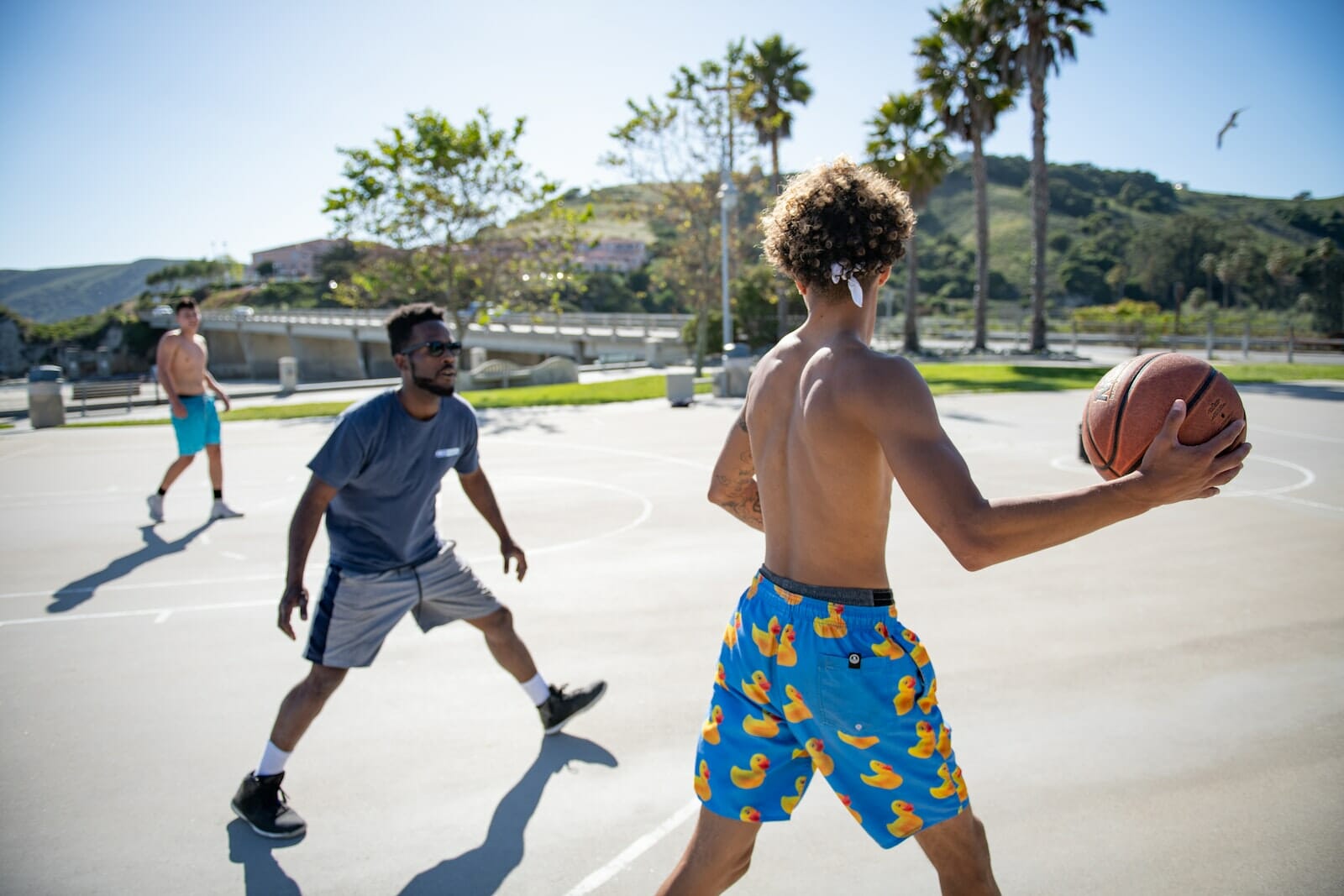If you want to learn the secrets of how to effectively pass the ball, you’ve come to the right place. Learning to be a great passer like Jokic or Stockton takes more than repeating certain movements. You will need not only the skill but also the practice. First, we’ll go over how to pass a basketball in four fundamental ways. Then we’ll dive into more complicated tasks, such as how to pass the basketball through your legs.
Four Basic Basketball Passes
Before jumping into anything too complicated, you have to master the fundamentals. There are four routine passes in basketball—chest passes, push passes, bounce passes, and overhead passes.
Chest Pass
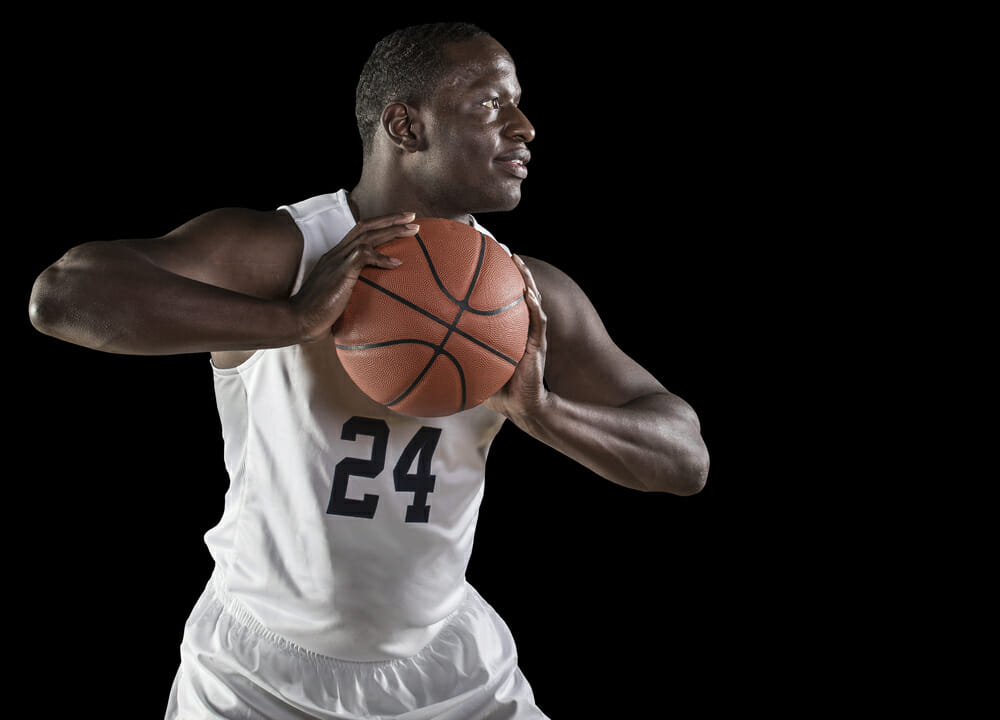
Chest passes are the most common type of pass. That also means the most common question new players have is how to perform a chest pass in basketball.
To perform a chest pass properly, you must integrate two separate motions—step forward with your leg and push with your arms.
Hold the basketball with both hands on either side of the ball. The ball should be close to your chest, and your thumbs should be on the backside of the ball, facing you. When you want to pass, step towards your teammate with one leg and snap your arms towards them.
Push Pass
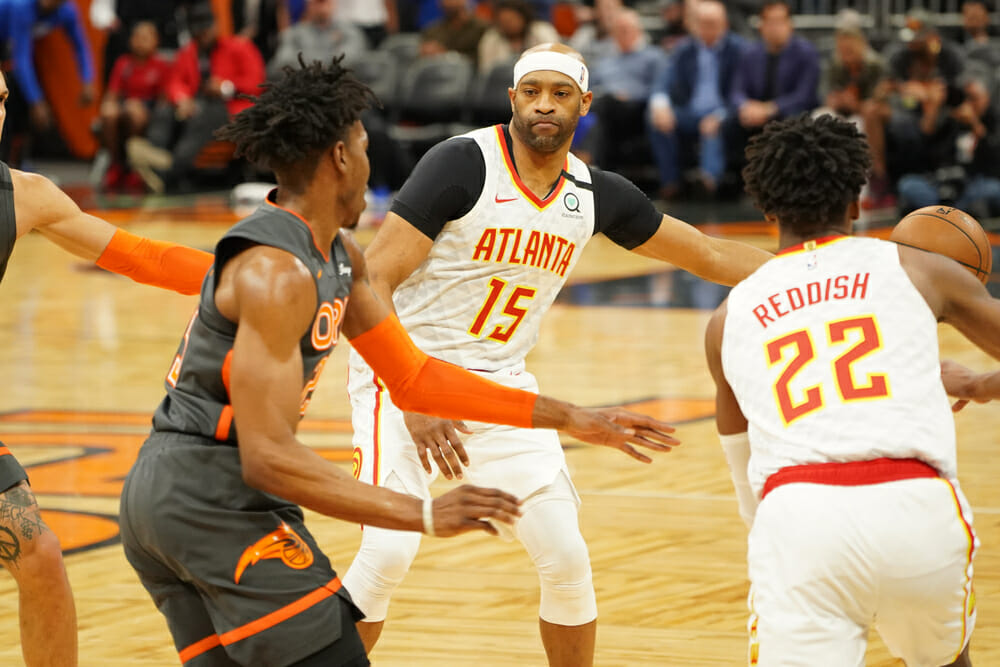
Push passes are very similar to chest passes, but instead of using two hands, you only use one, as it is an of the dribble pass. Players perform push passes when an opposing player guards them and very often without stopping their dribbling to catch the ball first.
To do a push pass, dribble the ball with the hand furthest from the defender in front of you. As the ball rises on the dribble, line your hand, arm, and elbow directly behind the ball.
As the ball gets to stomach or chest height, step forward and push the ball with one hand towards your teammate. You can also try push passes from a stationary position. Just follow the instructions without dribbling to pass the ball.
Bounce Pass
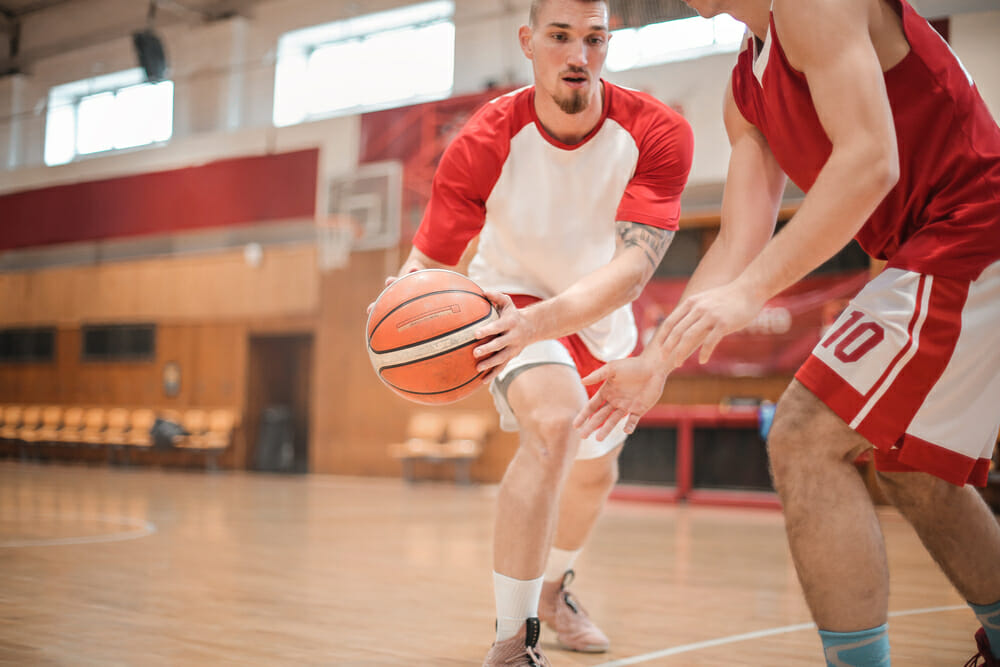
A perfectly timed bounce pass is almost impossible to defend. As the name suggests, a bounce pass is a pass that bounces off the ground before your teammate receives it.
Aim for your bounce pass to reach your teammate’s chest or stomach area. Start with your hands in the same position as a chest pass. That position allows for maximum power on release.
Aim for a spot to bounce the ball approximately three-quarters between you and your teammate. Then, take a step, extend your arms, and throw the ball with force to your chosen spot so that the ball has enough velocity to reach your target.
The bounce pass is one of the most common types of passes.
Overhead Pass

Overhead passes are among the best to learn, especially if you pass cross-court or down-court. You can perform an overhead pass anytime, but they’re optimal for long passes.
Start by holding the ball in both hands to do an overhead pass. Raise the ball above your head, but keep your elbows bent and ready to throw. Like a soccer throw-in, use both hands to throw the ball forcefully.
Ideally, throw the ball towards your teammate’s chest or head. These passes should go above the opposing team, so you should aim for the upper region of your teammates’ bodies.
Uncommon and Advanced Passes
Like any sport, basketball has some moves that are less common than others. Let’s go through less common basketball passing situations, including the through-the-legs pass and the fake pass.
Through-the-Legs Pass
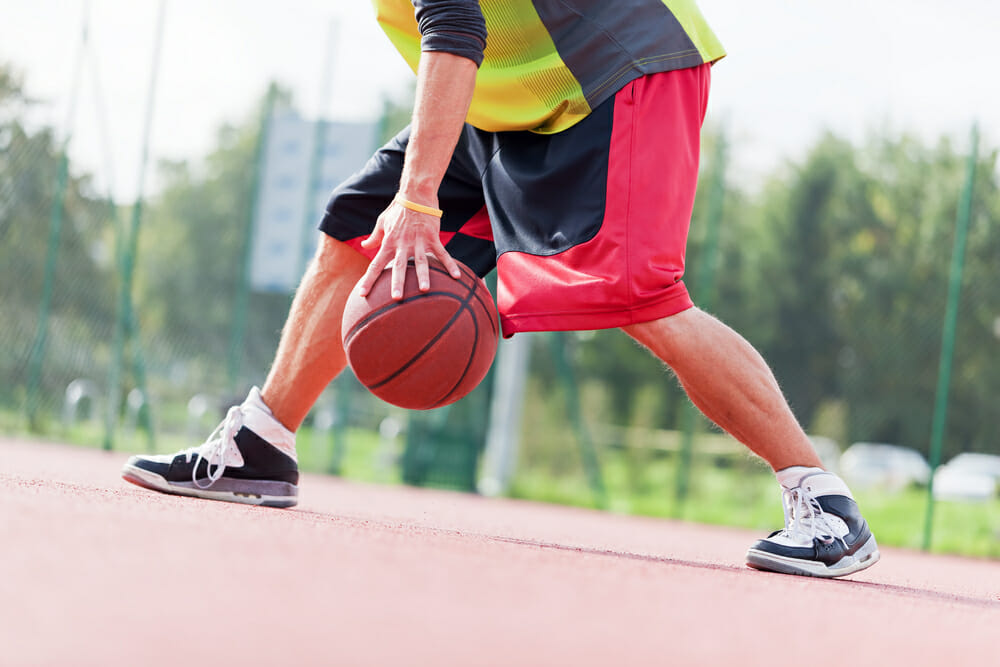
The through-the-legs pass is uncommon for beginners, but you’ll see NBA players doing it sometimes. The best way to do a through-the-legs pass is with a bounce pass.
Use one hand to bounce the ball with force between your legs. Bounce it in the direction of your teammate through your legs. Your teammate should be close to you. If not, you may end up turning it over.
Trap Pass
A trap is a play where multiple opposing players attempt to trap a single player with the ball on the other team. Learning to pass out of a trap is essential for not turning the ball over.
Passing out of the trap takes two steps—knowing where teammates are and allowing them time to lose their defender. Once they’ve lost their defender and are open, you can use either a push pass or an overhead pass to pass out of the trap.
Overhead or push passes are the best methods when your opponent is close to you. These passes give you space compared to chest or bounce passes. Space is key to getting out of a trap.
Keep in mind this article is about passing out of the trap. Other ways to escape a trap include dribbling, but that topic is for another article.
Fake Pass
A good pass fake is a great way to give yourself space on the court. Learning how to do a fake pass in basketball is easy and a helpful way to improve your game.
You can use any type of pass for a fake pass, but it’s best to start with two hands on the ball. Then, using whichever type of pass, begin the movements at full speed. When you’re getting close to releasing the ball, quickly stop and hold onto the ball. After you excel in simple fake passes then you can try faking with more pass advanced variations.
Fake passes are helpful because they cause defenders to change their focus and move with the ball. An excellent fake pass will open up space for a shot or a real pass.
Behind the Back Pass
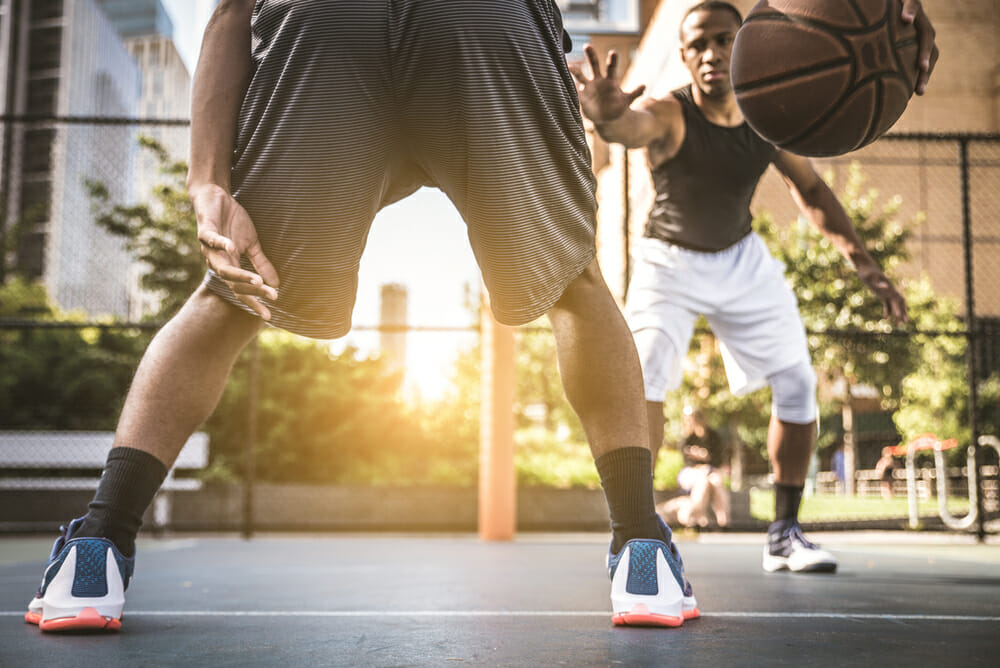
Baseball Pass
A baseball pass in basketball is a special type of pass that looks a lot like a baseball throw. More specifically, to make a baseball pass you need to raise the basketball behind your ear and then use your stronger arm to throw it directly towards your teammate. The ball usually goes straight ahead and does not follow a curved trajectory, which means that it reaches its target quickly and with lots of force. Baseball passes are mostly used in a basketball game in the occasion where you want to quickly move the ball across the court, like in a fast break situation. As you can easily understand, it is not very easy to make an accurate pass that will reach the intended receiver, hence is is one of the most advanced type of passes
5 Passing Tips to Pass a Basketball Better
Learning how to pass better in basketball is a great skill, but learning how to pass a basketball perfectly is a skill that takes a lifetime. To help you get your skills in tip-top shape, here are five tips to pass a basketball better.
- Learn how to catch a basketball pass. Knowing how to catch properly will give more appreciation for a good pass.
- Learn how to pass a basketball faster. Crisp passes have a better chance of reaching their target than soft ones.
- Always have a defender on you to mimic game conditions when you practice passing.
- Always keep at least one foot planted when you pass. That foot will act as the primary power source for your pass.
- Shorter passes have a better chance of making it to the receiver than long passes.
Wrapping Up
Learning how to pass a basketball is a skill every budding player needs to know. Whether they want to learn how to pass a basketball for beginners or experts, practicing your passing will only improve your game!
FAQs
What makes a good pass in basketball?
A good pass is one that reaches its intended receiver. A great pass, is one that creates a situation where the receiver can easily score some points or create such a situation for a teammate
How can I improve my passing?
Training and practice is the only way ti improve your basketball passing. In this article you may find some great types of passes to practice and some effective tips to excel in them
- How to Pass a Basketball (5 effective tips) - August 25, 2022
- Learn How to Spin a Basketball on your Finger in less than 3 minutes - July 18, 2022
- Where are basketballs manufactured? (hint : mostly Asia) - June 10, 2022

